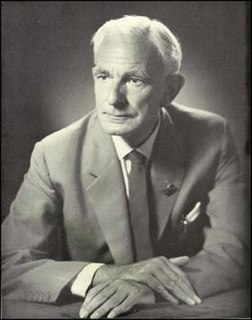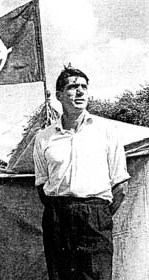Related Research Articles

John Hutchyns Tyndall was a British fascist political activist. A leading member of various small neo-Nazi groups during the late 1950s and 1960s, he was chairman of the National Front (NF) from 1972 to 1974 and again from 1975 to 1980, and then chairman of the British National Party (BNP) from 1982 to 1999. He unsuccessfully stood for election to the House of Commons and European Parliament on several occasions.

The National Front (NF) is a far-right, fascist political party in the United Kingdom. It is currently led by Tony Martin. As a minor party, it has never had its representatives elected to the British or European Parliaments, although it gained a small number of local councillors through defections and it has had a few of its representatives elected to community councils. Founded in 1967, it reached the height of its electoral support during the mid-1970s, when it was briefly England's fourth-largest party in terms of vote share.

Arthur Kenneth Chesterton was a British far-right journalist and political activist. From 1933 to 1938, he was a member of the British Union of Fascists (BUF). Disillusioned with Oswald Mosley, he parted ways with the BUF in 1938. Chesterton established the League of Empire Loyalists in 1954, which merged with a short-lived British National Party in 1967 to become the National Front. He founded and edited the magazine Candour in 1954 as the successor of Truth, of which he had been co-editor.
The League of Empire Loyalists (LEL) was a British pressure group, established in 1954. Its ostensible purpose was to stop the dissolution of the British Empire. The League was a small group of current or former members of the Conservative Party led by Arthur K. Chesterton, a former leading figure in the BUF, who had served under Sir Oswald Mosley. The League found support from some Conservative Party members, although it was disliked very much by the leadership.
The National Labour Party (NLP) was a British neo-Nazi political party founded in 1957 by John Bean. The party campaigned on a platform of white nationalism, anti-Semitism, and opposition to non-white immigration.

The White Defence League (WDL) was a British neo-Nazi political party. Using the provocative marching techniques popularised by Oswald Mosley, its members included John Tyndall.
John Edward Bean was a British political activist and writer, who was a long-standing participant in far-right politics in the United Kingdom, and a number of its movements.

Andrew Fountaine was an activist involved in the British far right. After military service in a number of conflicts Fountaine joined the Conservative Party and was selected as a parliamentary candidate until his outspoken views resulted in his being disowned by the party.
Andrew Henry William Brons is a British politician and former MEP. Long active in far-right politics in Britain, he was elected as a Member of the European Parliament (MEP) for Yorkshire and the Humber for the British National Party (BNP) at the 2009 European Parliament election. He was the Chairman of the National Front in the early 1980s. He resigned the BNP whip in October 2012 and became patron of the British Democratic Party. He did not seek re-election in 2014.
Martin Guy Alan Webster is a British neo-nazi, a former leading figure on the far-right in the United Kingdom. An early member of the National Labour Party, he was John Tyndall's closest ally, and followed him in joining the original British National Party, the National Socialist Movement and the Greater Britain Movement. Webster also spent time in prison for helping to organise a paramilitary organisation, Spearhead, and was convicted under the Public Order Act 1936. Rumours of his homosexuality led to him becoming vilified in far-right circles, and he quietly disappeared from the political scene.

Marie Françoise Suzanne Dior was a French socialite and neo-Nazi underground financier. She was the niece of French fashion designer Christian Dior and Resistance fighter Catherine Dior, who publicly distanced herself from her niece after she married British neo-Nazi activist Colin Jordan in 1963. She was a close friend of Savitri Devi.
The British National Party (BNP) was a neo-Nazi political party in the United Kingdom. It was led by John Bean. The group, which was subject to internal divisions during its brief history, established some areas of local support before helping to form the National Front in 1967. Scholar Nigel Fielding described the BNP as having a "firmly Nazi" ideology.
John O'Brien was a leading figure on the far right of British politics during the early 1970s.
The National Democratic Party (NDP) was a right wing political party that operated in the United Kingdom during the 1960s and 1970s. The NDP sought to position itself as an early rival to the National Front although ultimately it failed to challenge the position of this group.
The National Socialist Movement (NSM) was a British neo-Nazi group formed on 20 April, Adolf Hitler's birthday, in 1962, by Colin Jordan, with John Tyndall as his deputy as a splinter group from the original British National Party of the 1960s.
Denis Pirie is a veteran of the British far right scene who took a leading role in a number of movements.
The Racial Preservation Society was a far-right pressure group opposed to immigration and in favour of white nationalism, national preservation and protection in the United Kingdom in the 1960s.
The history of the National Front, a far-right political party in the United Kingdom, began in 1967, when it was founded by A. K. Chesterton.
References
- ↑ David Boothroyd, Politico's Guide to the History of British Political Parties , London: Politico's, 2001, p. 93
- ↑ S. Taylor The National Front in English Politics, London: Macmillan, 1982, p. 15
- 1 2 Taylor, The National Front in English Politics, p. 55
- ↑ Walker 1977, p. 46.
- ↑ Walker 1977, pp. 46–47.
- ↑ Peter Barberis, John McHugh, Mike Tyldesley, Encyclopedia of British and Irish Political Organizations: Parties, Groups and Movements of the 20th Century, Continuum International Publishing Group, 2000, p. 190
- ↑ John Tyndall, The Eleventh Hour, Welling: Albion Press, undated, p. 192
- ↑ Ray Hill & Andrew Bell, The Other Face of Terror, London: Grafton Books, 1988, p. 82
- ↑ J. Tyndall, The Six Principles of British Nationalism, 1966
- ↑ Walker 1977, p. 47.
- ↑ Nicholas Goodrick-Clarke, Black Sun: Aryan Cults, Esoteric Nazism, and the Politics of Identity , New York University Press, 2003, p. 38
- ↑ Cyprian Blamires, World Fascism: A Historical Encyclopedia, Volume 1, ABC-CLIO, 2006, p. 289
- 1 2 Boothroyd, The Politico's Guide to the History of British Political Parties, p. 94
- ↑ Walker 1977, p. 71.
- ↑ Walker 1977, p. 72.
- ↑ Walker 1977, p. 73.
- ↑ Walker 1977, p. 61.
- 1 2 Walker 1977, p. 62.
- ↑ John Bean, Many Shades of Black - Inside Britain's Far Right, London: New Millennium, 1999, p. 180
- ↑ Richard Thurlow, Fascism in Britain A History, 1918-1985, Oxford: Basil Blackwell, 1987, p. 269
- ↑ Walker 1977, p. 63.
- ↑ Walker 1977, p. 58.
- ↑ Michael Billig, A Social Psychological View of the National Front, Harcourt Brace Jovanovich, 1978, p. 134
- ↑ N. Copsey, Contemporary British Fascism, Palgrave Macmillan, 2004, p. 15
- ↑ Walker 1977, p. 68.
- Bibliography
- Walker, Martin (1977). The National Front. London: Fontana. ISBN 978-0-00-634824-5.